Mediterranean bulbs at Kew
Tuesday 28 February 2017 with Tom Freeth and Kit Strange
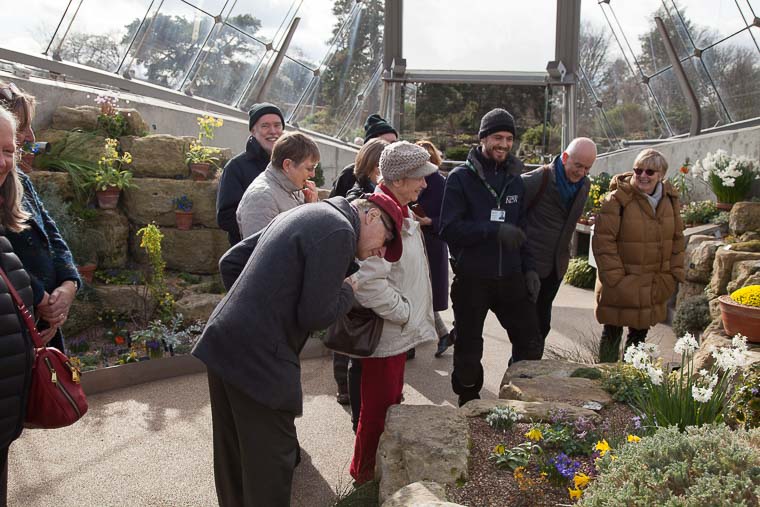
Tom Freeth, Davies Alpine House
As soon as we advertised this visit, it was immediately booked up with our maximum of 20 people. Fortunately when I asked Kit what could be done she and Tom agreed that they could divide us into two groups of 20 and we were fully booked again in no time.
So, as arranged, we met at the Victoria Gate just before 11 am on 28 February and walked up to the Davies Alpine House to meet Tom and Kit. We divided into two groups. Tom took one round the Davies Alpine House and the rockery, Kit taking the other group into the Alpine Yard, an area not open to the general public, and then we swapped over.
I was with the Tom group to start and he explained in considerable details the workings and technology of the Alpine house as it had been designed to create as cool an ambient temperature as possible all year round. He explained how there is an underground labyrinth of air passages which moves colder air out onto the plants via vents and the shape of the house aids this. Sails also cover the flanks when shading is required, particularly in the summer.
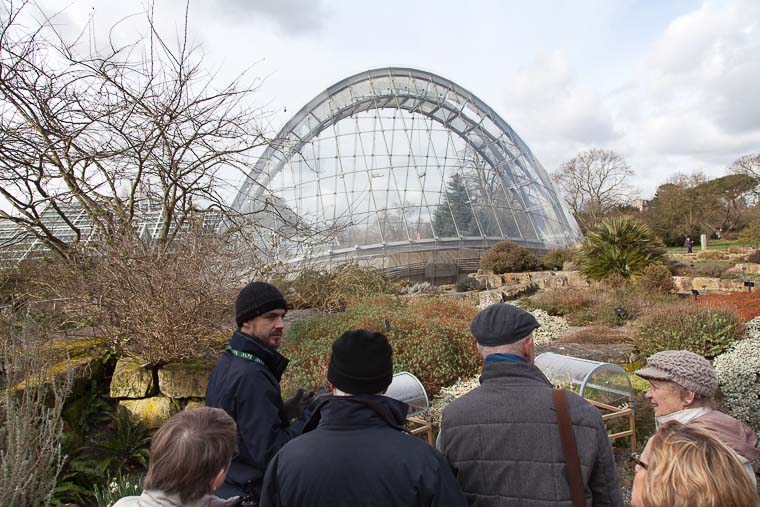
As well as some more familiar plants there were some that were not so recognisable to many of us. Gethyum atropurpureum being one, an Amaryllid from northern Chile with small brown start flowers obviously allied to Narcissus (the daffodil) in the same family, but not obvious from its appearance.
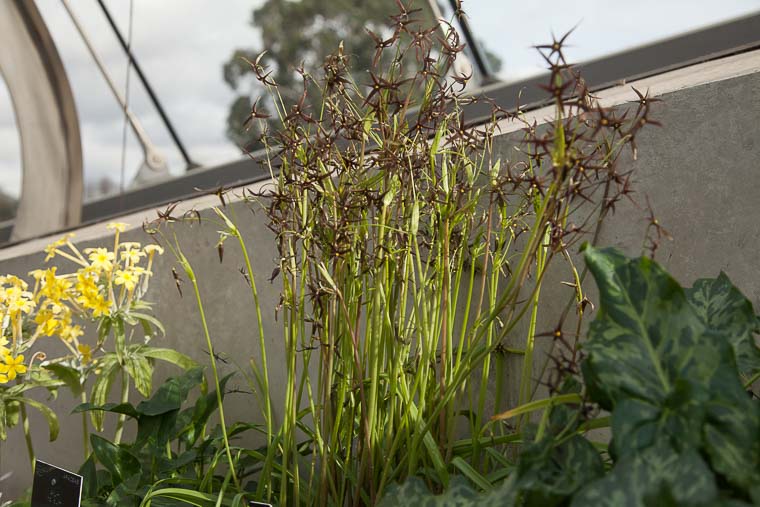
Gethyum atropurpureum
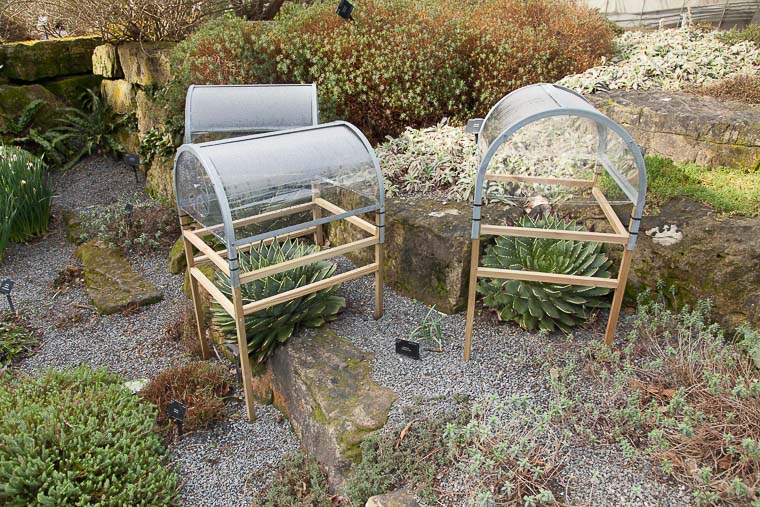
Aloe polyphyllum
In the time we had available and with plenty of questions we made a little progress into the rockery. Tom showed us the rare Aloe polyphyllum from Lesotho and a high altitude cold tolerant species from above 2000m. It is quite difficult to cultivate successfully and at Kew they decided the plants they had might be better planted out. Knowing that winter wet as well as cold is an issue in our London climate they now have personal cloches which will hopefully lead to successful cultivation in the open. [Note 2022: The aloes no longer have a winter cover.]
He went on to talk about encouraging a natural style of planting and showed us the Pseudomuscari azureum which has over time made a lovely colony growing through other plants.
Kit returned with the other group and we did our swop over. Taking us into the Duke’s Garden we entered behind the scenes through a gate in the corner. We then had an introduction to the collections with Kit standing in front of two cloud pruned Ligustrum! There were plenty of questions about potting, composts, sand plunging, or not, diseases and more. The range of plants included many from the Mediterranean with many small shrubby species including Lithodora zhanii from the Peloponnese.
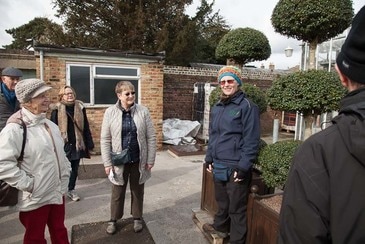
Kit Strange introduction
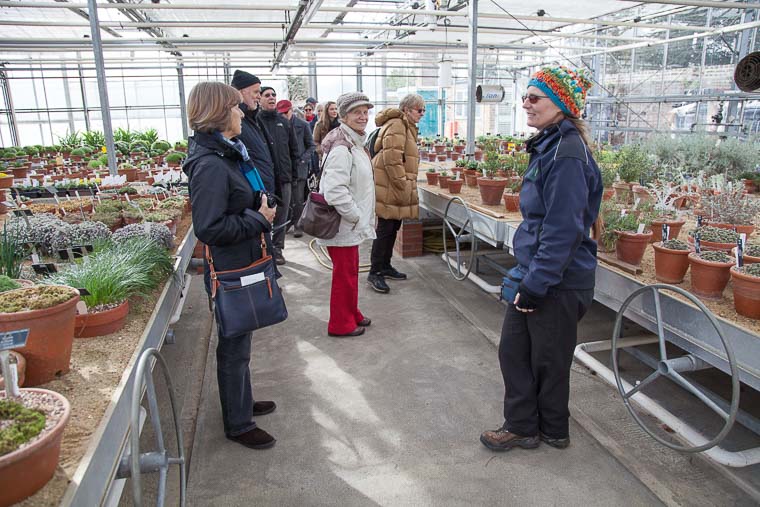
Kit Strange Alpine Yard
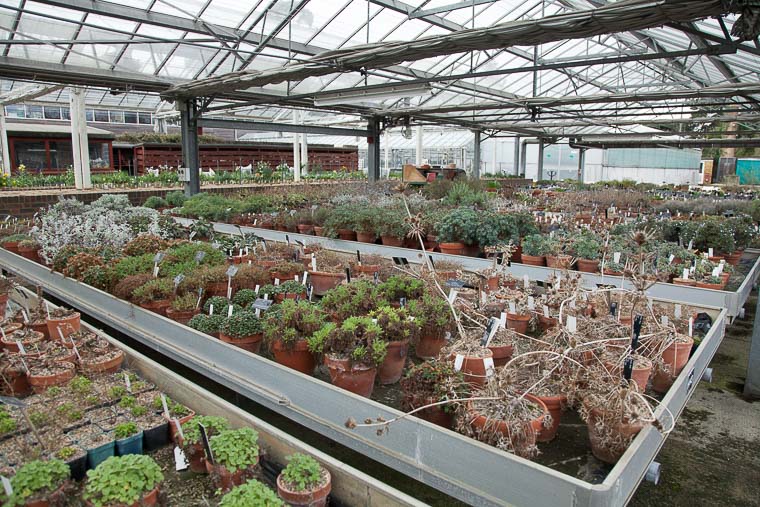
Alpine Yard
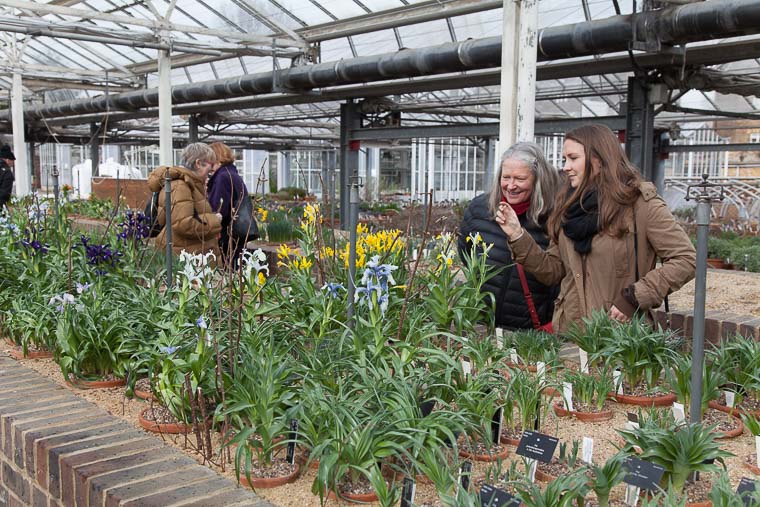
Juno Iris collection
The collection that Kew is famous for is the Juno Iris collection of which quite a few were in full flower. Most are native from the Middle East into central Asia but the Mediterranean has one species, Iris planifolia. In a sand plunge amongst the huge bulb collection was a cluster of pots of Fritillaria chitralensis which is relatively rare in cultivation. It is a close relative of the crown imperial Fritillaria imperialis. Just before we left I noticed this huge clump of Cyclamen persicum which is very obviously the wild form.
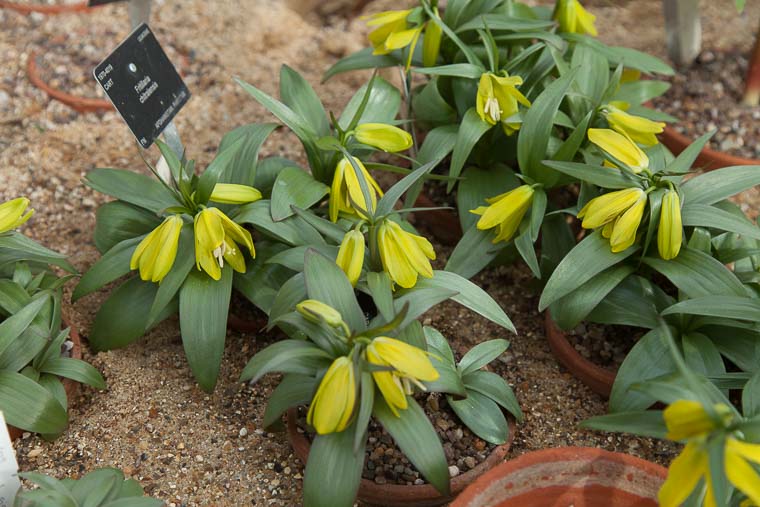
Fritillaria chitlarensis
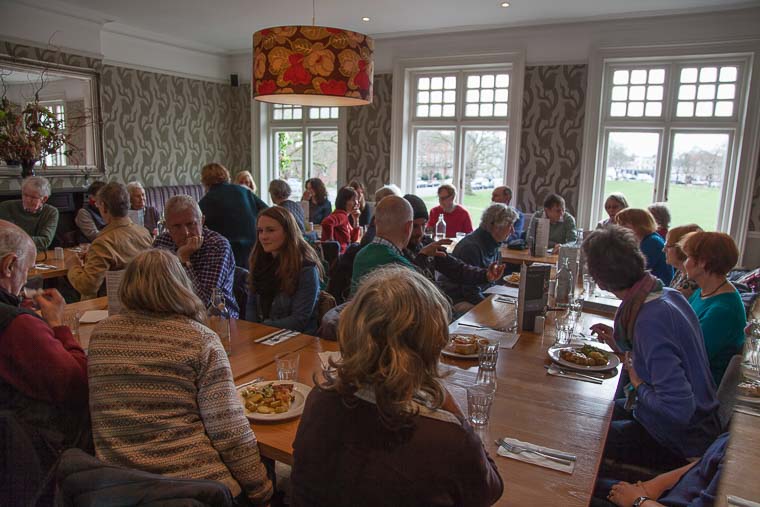
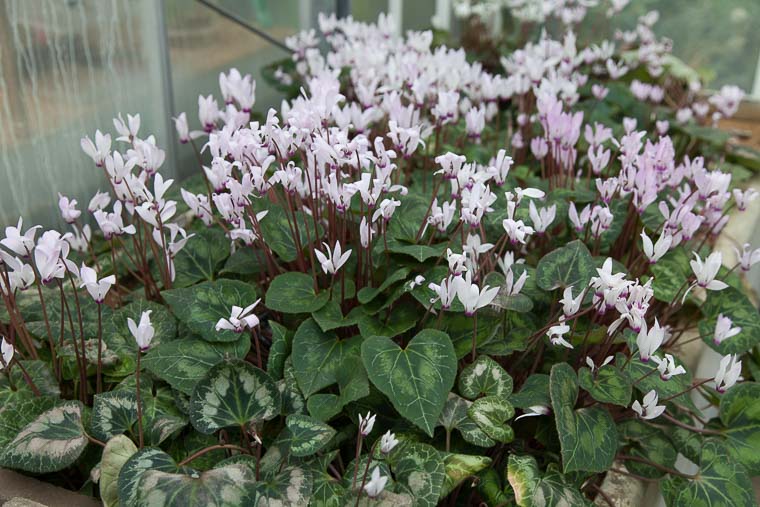
Cyclamen persicum
As a room for lunch in the orangery at Kew wasn’t available Kit suggested The Greyhound on Kew Green where they have a room big enough for all of us. Tom and Kit were able to join us for lunch and it was an enjoyable end to the visit. A number of us went back into the the gardens and bumped into each other in the Princess of Wales’ conservatory.
John Fielding

